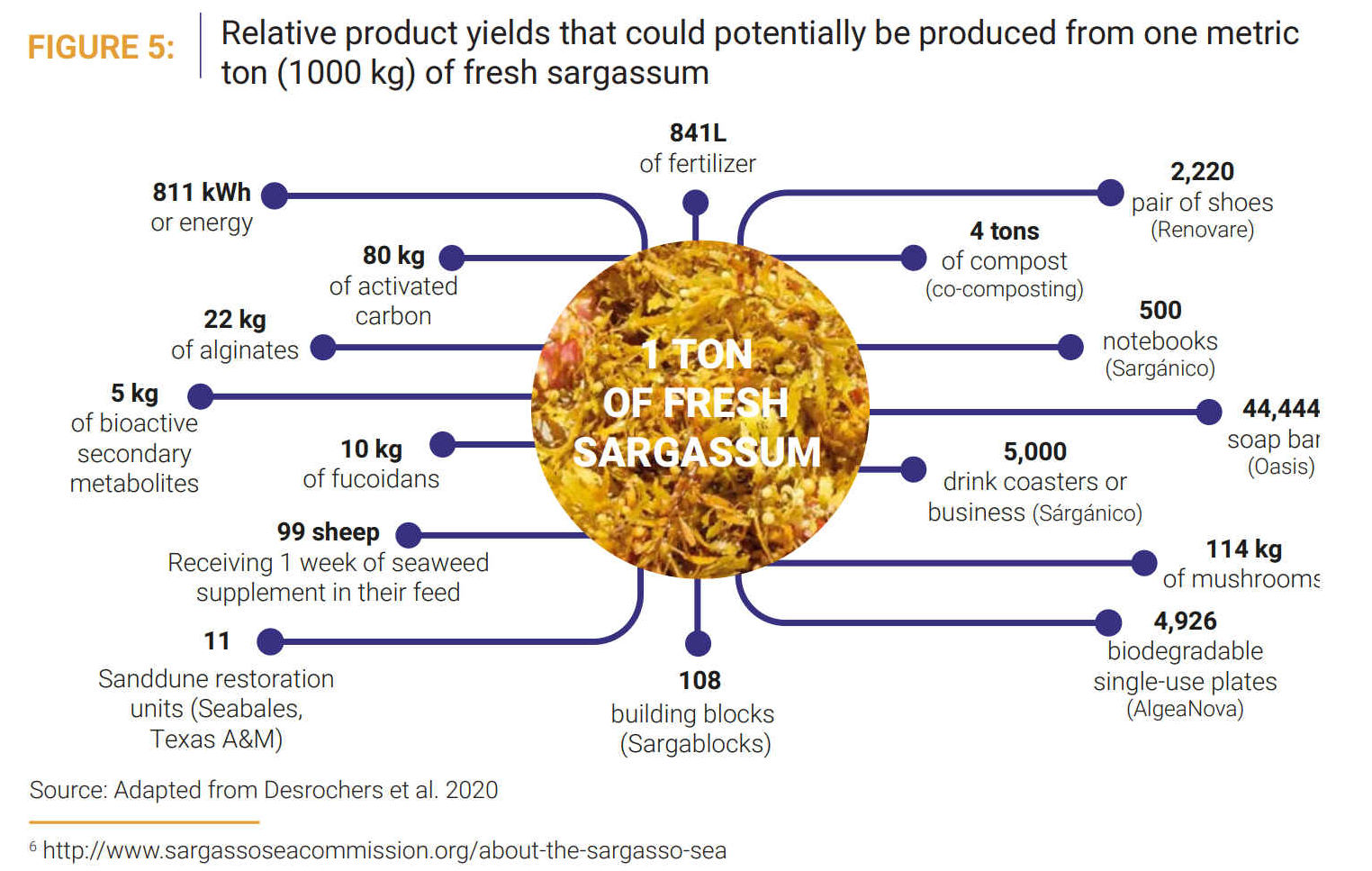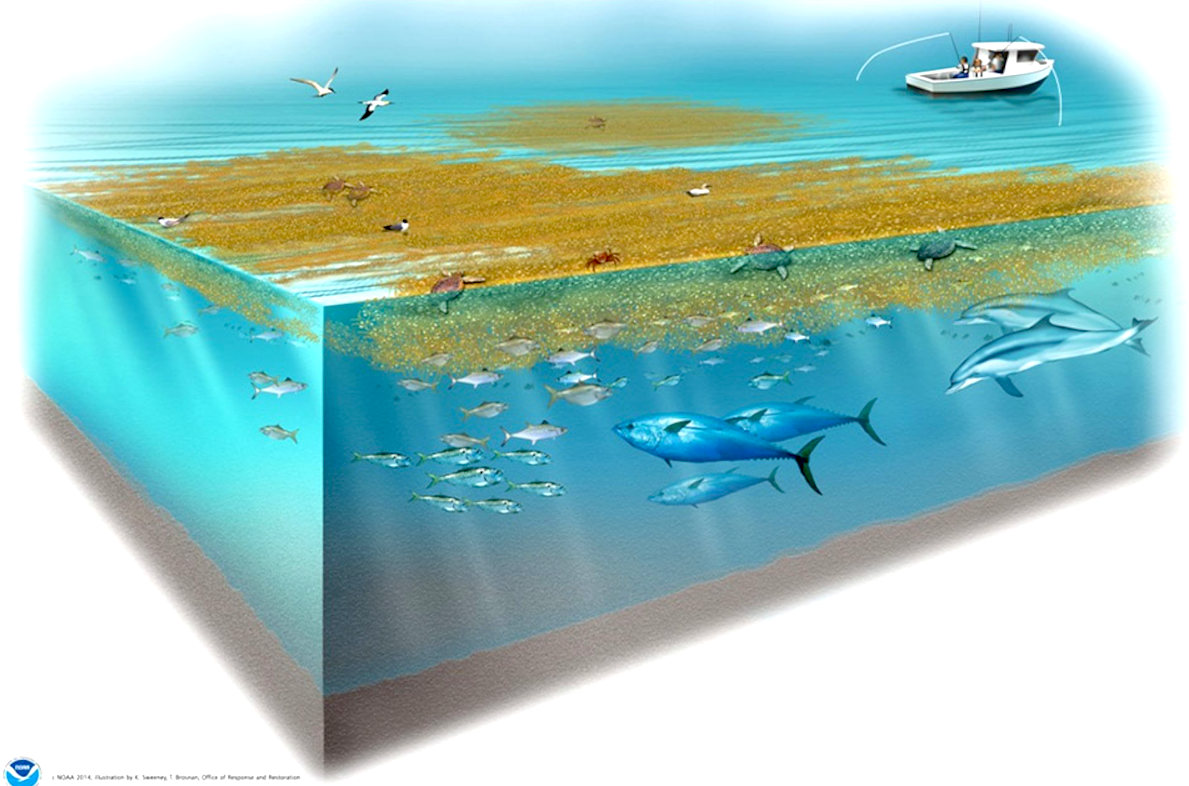
USE
OF A GYM - Resistance training stimulates muscle protein synthesis (MPS) for a period of up to 48 hours following exercise. Ingestion of a protein-rich meal at any point during this period will augment the exercise-induced increase in muscle protein synthesis.
Seaweed is naturally low in calories, fat free, and high in fiber, so including it as part of your diet can help to meet daily requirements of fiber without adding unwanted calories and fat.
Sea vegetables contain a variety of vitamins and minerals that are necessary for peak exercise
performance. “They’re also a good source of iron, a nutrient that, if deficient, can cause problems for athletes. Low iron levels can negatively impact exercise performance by increasing time to fatigue and increasing the chance of injury.” Another essential mineral for hard-training athletes is iodine, which is a key element of seaweed. “While the body needs only a small amount of iodine, that amount is critical.” “Iodine is a part of thyroxine, the hormone made by the thyroid gland that is responsible for regulating our basal metabolic rate.”
Seaweed may also help keep you from packing on extra pounds in your midsection, as recent studies have shown that alginate, found in brown algae, can increase feelings of satiety and reduce caloric intake. One 2008 study published in the journal Appetite showed a 135-calorie reduction in the diets of subjects who ate a daily dose of alginate extract.
Sea vegetables are a nutrient-dense food that add more variety to your meals. “However, because sea vegetables are high in sodium and iodine, you’ll want to eat in moderation.” There is also some concern about high levels of heavy metals like arsenic in some types of seaweed, so make sure you purchase products that are labeled organic.
Seaweed is classified by color: red, brown, green or blue. Some common names you will find at your local Asian store,
supermarket, or specialty grocer include nori, hijiki, arame, kombu, and dulse, and these varieties will be sold as sheets, flakes, or powder. Sea
vegetables do not need to be cooked and can simply be added to soups, salads, and stir-frys.

Seaweed can be purchased fresh or dried from most Asian supermarkets. Nori, the type commonly used to roll sushi, may also be available at regular grocery stores.
In addition to their use for sushi, nori sheets can also easily be used to replace tortilla bread when making wraps.
You can toss fresh wakame and sea lettuce with a little rice vinegar, sesame oil, and sesame seeds to make a delicious salad.
Dried nori or dulse make for nice savory snacks. Or try crumbling them over salads to add a dash of umami flavor.
Spirulina and chlorella can be incorporated into smoothies, while kelp can be used instead of salt to add flavor to just about anything.
Many types of seaweed can also be incorporated into warm dishes, including soups, stews, and baked goods. There’s no right or wrong way to go about it.
Add to taste.
COMMON TYPES OF SEAWEED
There are many varieties of edible seaweed in the world. Here are a few of the most common:
- Nori: This is a red algae commonly sold in dried sheets and used to roll sushi.
Sea lettuce. This is a type of green nori that looks like lettuce leaves. It is commonly eaten raw in salads or cooked in soups.
- Kelp: This brown algae is usually dried into sheets and added to dishes during cooking. It can also be used as a gluten-free alternative to noodles.
-
Kombu: This is a type of kelp with a strong flavor. It’s often pickled or used to make soup stock.
- Arame: This is a different type of kelp with a mild, sweet flavor and firm texture. It can be incorporated into a variety of dishes, including baked goods.
-
Wakame. This brown algae is commonly used to make fresh seaweed salad. It can also be cooked in stews and soups.
- Dulse: This is a red algae with a softer, chewier texture. It is used to add flavor to a variety of dishes and may also be eaten as a dried snack.
-
Chlorella: This green, edible freshwater algae is often sold as a supplement in powdered form.
- Agar and carrageenan: These jelly-like substances obtained from algae are used as plant-based binding and thickening agents in a variety of commercially sold food products.
- Spirulina: is often referred to as an edible, blue-green freshwater algae and is sold in tablet, flake or powdered form.
Spirulina has a different structure than other algae and is therefore technically considered a type of cyanobacteria (blue-green algae).
NUTRIENT CONTENT
Seaweed is rich in various minerals and trace elements. In fact, it often contains higher levels of these nutrients than most other foods.
For this reason, many consider seaweed to be “the vegetables of the sea.”
Seaweed’s nutrient content can vary based on where it was grown. As a result, different types will contain different amounts of nutrients.
Generally, 1 cup (15 grams) of seaweed provides you with:
Calories: 45
Protein: 5 grams
Fat: 1 gram
Carbs: 8 grams
Fiber: 1 gram
Folate: 13% of the daily value (DV)
Riboflavin: 22% of the DV
Thiamin: 15% of the DV
Copper: 56% of the DV
Iron: 21% of the DV
Magnesium: 17% of the DV
Seaweed also contains smaller amounts of several other nutrients. Iodine content can vary significantly between types, but one serving of seaweed can easily contain a day’s worth of iodine or more.
Some claim that seaweed is a great plant source of vitamin
B12, a vitamin naturally found in meat, poultry, eggs, and dairy.
However, there’s still debate on whether the form of vitamin B12 found in algae is active in humans.
Finally, seaweed is a rich source of antioxidants. It also contains a good amount of sulfated polysaccharides (sPS), which are beneficial plant compounds thought to contribute to seaweed’s health benefits.
THYROID FUNCTION
Your thyroid plays several important roles in the body, including in the regulation of your metabolism.
It requires a good intake of iodine to function properly. Luckily, iodine is readily available in most varieties of seaweed. Other sources of iodine include seafood, dairy products, and iodized salt.
Failure to get enough iodine from your diet can lead to hypothyroidism, when your thyroid is underactive. This can create symptoms such as low energy, dry skin, tingling in the hands and feet, forgetfulness, depression, and even weight gain.
The recommended daily intake of iodine for adults is 150 mcg per day. Most people can meet this requirement by eating several servings of seaweed per week.
That said, certain varieties — such as kelp, kombu, and dulse — tend to contain very high amounts of iodine and should not be eaten frequently or in high amounts.
Others, such as spirulina, contain very little, so don’t rely on them as your only source of iodine.
HEART HEALTH
Seaweed contains certain beneficial nutrients that may help keep your heart healthy.
For starters, it’s a good source of soluble fiber and contains long-chain omega-3 fatty acids, both of which could be beneficial for heart health.
In addition, several animal studies report that the sPS found in seaweed may have the ability to reduce blood pressure and prevent blood clotting.
They may also help reduce LDL (“bad”) cholesterol and total cholesterol levels.
Some human studies also report that high seaweed intakes may reduce blood pressure levels in kids and adults.
Although these results seem promising, not all studies found similar results and more human studies are needed before strong conclusions can be made.
BLOOD SUGAR CONTROL
Adding seaweed to your diet may reduce your risk of developing type 2 diabetes.
Researchers believe that certain compounds found in seaweed may play a beneficial role in stabilizing blood sugar levels and preventing type 2 diabetes.
One of these is fucoxanthin, an antioxidant that gives brown algae its characteristic color. This compound is thought to help reduce insulin resistance and stabilize blood sugar levels.
In addition, the type of fiber found in seaweed may slow down the speed at which carbs are absorbed from a meal. This can make it easier for your body to stabilize your blood sugar levels.
In another study, healthy participants who were given seaweed extract 30 minutes before a carb-rich meal benefited from an 8% higher insulin sensitivity than those given a placebo.
Higher insulin sensitivity is beneficial because it helps your body respond better to insulin and regulate your blood sugar levels more effectively.
Overall, seaweed may be beneficial for blood sugar control, but optimal dosage levels remain unclear. More research is also needed to study the effects of raw versus powdered varieties.
WEIGHT MANAGEMENT
Eating seaweed regularly may help you lose weight, if that’s your goal.
Researchers believe this may be due, in part, to seaweed’s ability to affect your levels of the weight-regulating hormone leptin. Combined with seaweed’s high fiber content, this may help decrease hunger and enhance feelings of fullness.
In addition, fucoidan, a type of sPS found in seaweed, may enhance fat breakdown and prevent its formation.
What’s more, seaweed is low in calories, but rich in glutamate, an amino acid that gives it a savory umami taste.
So, seaweed snacks may help boost weight loss by providing a satisfying alternative to more calorie-rich snack options.
IMMUNE FUNCTION
Seaweed may also help protect you from certain types of infections.
That’s because it contains marine plant compounds believed to have antioxidant, anti-allergenic, and disease-fighting properties.
Research shows that these compounds may have the ability to fight viruses by blocking their entry into cells.
A study in 73 HIV-positive women found that those given 5 grams of spirulina per day developed 27% fewer condition-related symptoms, compared to the placebo group.
However, no differences in immune cell levels were observed over the 12-week study period.
Unfortunately, not many other high quality studies have been done in humans to support these effects. Additional studies are needed before strong conclusions can be made.
DIGESTIVE HEALTH
Seaweed may help improve the health of your gut in various ways. For one, it’s rich in fiber, which can help prevent constipation and ensure smooth digestion.
It also contains agars, carrageenans, and fucoidans, which are thought to act as prebiotics.
Prebiotics are a type of nondigestible fiber that feeds the beneficial bacteria in your gut. The more good bacteria you have in your gut, the less space there is for harmful bacteria to thrive.
Accordingly, animal studies show that taking seaweed supplements may improve the amount of healthy bacteria and reduce the amount of harmful bacteria in the gut more effectively than other types of prebiotics.
Researchers also believe that the prebiotics found in seaweed may have certain anti-inflammatory and antibacterial effects.
This may be partly because, when feeding on prebiotics, the bacteria in your gut produce butyrate. This short-chain fatty acid is believed to have anti-inflammatory effects inside the colon.
In addition, certain prebiotics may have the ability to block harmful bacteria such as H. pylori from sticking to the gut wall. In turn, this may prevent the formation of stomach ulcers.
CANCER RISK
The presence of seaweed in your diet may help reduce your risk of developing certain types of cancer.
For instance, researchers believe that seaweed may help decrease estrogen levels, potentially reducing a woman’s risk of developing
breast cancer.
What’s more, some studies suggest that a class of compounds found in brown varieties, such as kelp, wakame and kombu, may help prevent the spread of cancerous cells.
That said, very few human studies have investigated the direct effects of seaweed in people with cancer. Very high intakes may also increase the risk of certain cancers, particularly thyroid cancer.
Ultimately, more studies are needed before strong conclusions can be drawn.
OTHER POTENTIAL BENEFITS
Seaweed may also offer some protection against skin damage and bone and inflammatory diseases.
Compounds in seaweed may help protect the skin from damage caused by UVB rays from the sun when applied directly to the skin. They may also help prevent wrinkles, sun spots and premature skin aging.
When it comes to protecting against diseases, seaweed’s antioxidant and anti-inflammatory effects may help reduce the risk of developing rheumatoid arthritis and osteoporosis.
HEAVY METAL CONTENT
Depending on where they’re grown, some varieties of seaweed can contain high levels of mercury, cadmium, lead, and arsenic.
The Food and Drug Administration (FDA) regulates the levels of these chemicals and heavy metals in fresh seaweed.
However, supplements are not as tightly regulated and may contain levels that are detrimental to health. To ensure safety, look for seaweed or algae supplements that have been third-party tested by an independent lab.
SUPPLEMENTS
Supplements
can help you regain strength and fitness after a period of inactivity,
or injury. Supplements can’t provide you with
maximum muscle gains if your nutrition and exercise programs are lacking.

CLIMATE
& OCEAN POLLUTION
Seaweed, or
macro-algae, form the most extensive and productive vegetated coastal
habitats, with kelp being the equivalent of an underwater forest,
soaking up carbon
dioxide, and making oxygen. They colonize all latitudes and are efficient at capturing atmospheric CO2 and converting it into plant material. An international research team has reported that a diverse range of macroalgae species drifts as much as 5000 kilometers beyond coastal areas. Around 70 percent of this seaweed, therefore carbon, will sink to ocean depths below 1000 meters, meaning the carbon is unlikely to return to the atmosphere.
Unfortunately,
some seaweeds can become a nuisance. Such as sargassum
from the Sargasso
Sea, now at crisis point with many holiday destinations in the Gulf
of Mexico and dozens of islands in the Caribbean
Sea, becoming overwhelmed by the macro algae, on beaches, strewn
with around an estimated 22 million tons in 2022. Up from previous
plagues in 2014 and 2021.
Efforts
to clean beaches with diesel
powered machinery have so far been expensive and damaging to wildlife,
also counterproductive in terms of climate
change - global
warming being the root cause of the massive blooms.
What
is needed is an offshore solution, that can harvest massive volumes of
the crop while it is still floating out at sea, that is powered by
renewables like hydrogen
and solar
power. Perhaps with the ability to use satellites and ocean current
data, to accurately track down the sargassum, and report yields to a
central database - such as not to cause harm to areas that need to be
conserved. Such a concept does exist, but would need to be adapted to
this latest problem - where previously it was designed to tackle marine
litter.
The
first step in any such project proposal, might be a study to determine
if such machines might be commercially viable, or how what contribution
might be necessary from Caribbean islanders, Mexico and Florida, etc.
A
second step might be to cost and produce a proof of concept vessel, at a
smaller scale, prior to commission of any larger scale prototype.

BIOMASS - BUILDING
MATERIALS - CANCER - CLOTHING
& SHOES - CO2
SEQUESTRATION - COSMETICS
FERTILIZERS - FOODS - MEDICINES - MINERALS - PACKAGING - SUPPLEMENTS - VITAMINS

Sargassum
from the North Atlantic
ocean travels down the coast to Cancun, Gulf of Mexico, and then on
to the Caribbean Sea. Much of the large brown floating seaweed travels
across to to the west coast of Africa, where it is beached in similar
fashion. It is potentially a cash crop, if harvested while out at sea.
CARIBBEAN
ISLANDS BY POPULATION
1 Cuba 11,252,999
2 Haiti 11,263,077
(Hispaniola)
3 Dominican
Republic 10,766,998 (Hispaniola)
4 Puerto
Rico (US) 3,508,000
5 Jamaica 2,729,000
6 Trinidad
and Tobago 1,357,000
7 Guadeloupe (France)
405,000
8 Martinique (France)
383,000
9 Bahamas 379,000
10 Barbados 283,000
11 Saint
Lucia 172,000
12 Curaçao (Netherlands)
157,000
13 Aruba (Netherlands)
110,000
14 Saint
Vincent and the Grenadines 110,000
15 United
States Virgin Islands 105,000
16 Grenada 104,000
17 Antigua
and Barbuda 89,000
18 Dominica 71,000
19 Cayman
Islands (UK) 59,000
20 Saint
Kitts and Nevis 46,000
21 Sint
Maarten (Netherlands) 39,000
22 Turks
and Caicos Islands (UK) 37,000
23 Saint
Martin (France) 36,000
24 British
Virgin Islands (UK) 31,000
25 Caribbean
Netherlands 26,000
26 Anguilla (UK)
14,000
27 Saint
Barthélemy (France) 10,000
28 Montserrat (UK)
5,000
29 Tortuga 25,936
30 Roatán 110,000
LINKS
https://www.healthline.com/nutrition/seaweed-healthy-nutritious#buying-and-eating-seaweed












